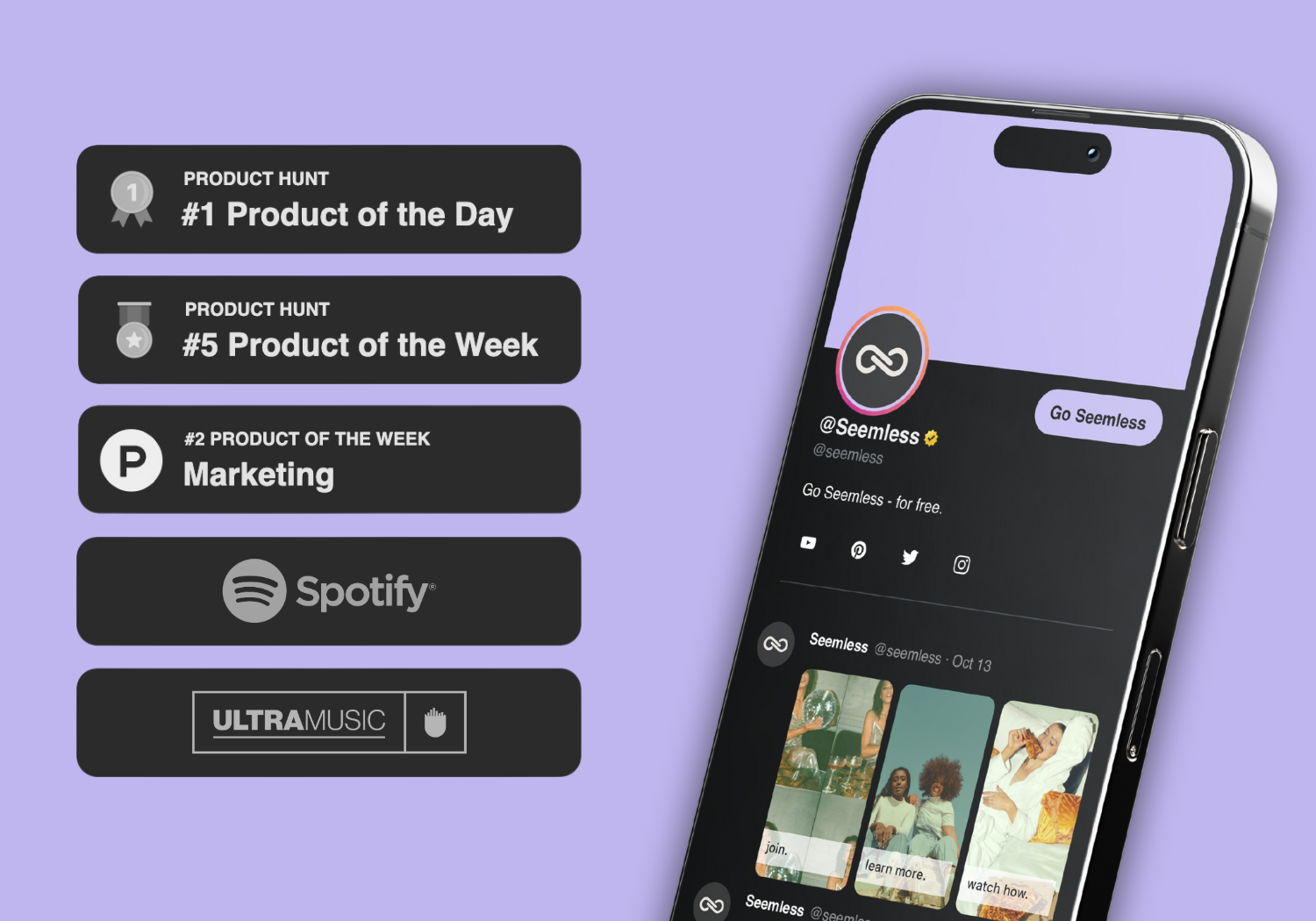In the vibrant and ever-evolving landscape of social media, TikTok has emerged as a powerhouse platform, captivating millions with its short-form video content. Central to the success of any TikTok post is the strategic use of hashtags. These small but mighty tools serve as a bridge between creators and their target audience, allowing users to categorize content and discover videos that resonate with their interests.
Hashtags on TikTok function similarly to those on other social media platforms, but their unique algorithm and user behavior patterns necessitate a deeper understanding of how they operate within this specific ecosystem. By effectively leveraging hashtags, creators can enhance their visibility, engage with a broader audience, and ultimately drive more traffic to their profiles. The significance of hashtags extends beyond mere categorization; they are instrumental in shaping trends and fostering community engagement.
On TikTok, hashtags can propel a video into the viral stratosphere, making it essential for creators to stay attuned to trending tags and popular challenges. The platform’s algorithm prioritizes content that aligns with current trends, meaning that using the right hashtags can dramatically increase the likelihood of a video being featured on the “For You” page. This page is a curated feed of content tailored to individual users based on their interests and interactions, making it a coveted spot for creators aiming to expand their reach.
Understanding the nuances of TikTok hashtags is not just about adding a few keywords; it involves a strategic approach that considers timing, relevance, and audience engagement.
Key Takeaways
- TikTok hashtags are essential for increasing visibility and engagement on the platform
- Choose hashtags that are relevant to your content and have a high search volume
- Use TikTok analytics to track the performance of your hashtags and adjust your strategy accordingly
- Monitor the reach, engagement, and follower growth of your hashtags using TikTok’s built-in analytics
- Consider using third-party tools to gain deeper insights into your hashtag performance and make informed decisions
Selecting the Right Hashtags for Your Content
Choosing the appropriate hashtags for your TikTok content is a critical step that can significantly influence your video’s performance. The first consideration should be relevance; hashtags must accurately reflect the content of your video to attract viewers who are genuinely interested in what you have to offer. For instance, if you are sharing a cooking tutorial, using hashtags like #CookingTips or #EasyRecipes will help you connect with users searching for culinary inspiration.
However, relevance alone is not enough; creators must also consider the popularity of the hashtags they choose. Striking a balance between widely used tags and niche-specific ones can enhance visibility while ensuring that your content does not get lost in a sea of posts. Another vital aspect of selecting hashtags is understanding your target audience.
Conducting research on what hashtags resonate with your intended viewers can provide valuable insights into their preferences and behaviors. Engaging with similar content creators or exploring trending challenges can also offer inspiration for effective hashtag usage. Additionally, creators should not shy away from experimenting with different combinations of hashtags to see which ones yield the best results.
This trial-and-error approach allows for a more tailored strategy that evolves alongside changing trends and audience interests. Ultimately, selecting the right hashtags is an art form that requires both creativity and analytical thinking.
Tracking Hashtag Performance on TikTok

Once you have implemented your hashtag strategy, the next step is to track their performance meticulously. Monitoring how well your chosen hashtags are performing can provide invaluable insights into what resonates with your audience and what does not. TikTok offers various metrics that can help creators gauge the effectiveness of their hashtags, including views, likes, shares, and comments.
By analyzing these metrics, you can determine which hashtags are driving engagement and which may need to be reconsidered in future posts. This data-driven approach allows for continuous improvement and optimization of your content strategy. In addition to basic engagement metrics, it is also essential to consider the reach of your hashtags.
Reach refers to the number of unique users who have seen your content, and understanding this metric can help you assess whether your hashtags are effectively broadening your audience. If certain hashtags consistently yield high reach but low engagement, it may indicate that while they attract viewers, they do not necessarily connect with them on a deeper level. Conversely, hashtags that generate both high reach and engagement are likely hitting the mark in terms of relevance and appeal.
By keeping a close eye on these performance indicators, creators can make informed decisions about their hashtag strategy moving forward.
Using TikTok Analytics to Monitor Hashtag Performance
TikTok provides its users with built-in analytics tools that can be instrumental in monitoring hashtag performance. For creators who have switched to a Pro account, access to detailed analytics is available, offering insights into video performance over time. This feature allows users to track metrics such as total views, profile visits, and follower growth, all of which can be correlated with specific hashtags used in posts.
By analyzing this data, creators can identify patterns and trends that inform their future content strategies. For instance, if certain hashtags consistently lead to spikes in views or engagement, it may be worth incorporating them more frequently into your posts. Moreover, TikTok’s analytics tools also allow for demographic insights into your audience, providing information about their age range, gender, and geographic location.
This data can be invaluable when selecting hashtags that resonate with your target demographic. For example, if your analytics reveal that a significant portion of your audience is from a specific region or age group, tailoring your hashtag strategy to reflect local trends or interests can enhance engagement. By leveraging TikTok’s analytics capabilities effectively, creators can refine their approach to hashtag usage and ensure that their content remains relevant and engaging to their audience.
Utilizing Third-Party Tools for Hashtag Tracking
While TikTok’s built-in analytics provide valuable insights, many creators find that third-party tools offer additional layers of functionality for tracking hashtag performance. These tools often come equipped with advanced features such as real-time tracking, competitor analysis, and comprehensive reporting capabilities. By utilizing these resources, creators can gain a more nuanced understanding of how their hashtags are performing in relation to industry benchmarks and competitors.
This competitive analysis can reveal opportunities for improvement and help creators identify gaps in their current strategy. Additionally, third-party tools often provide insights into trending hashtags across various niches and industries. This information can be particularly beneficial for creators looking to stay ahead of the curve by adopting emerging trends before they become mainstream.
By keeping an eye on trending tags through these tools, creators can position themselves as thought leaders within their niche and attract a dedicated following. Ultimately, integrating third-party tools into your hashtag tracking strategy can enhance your overall effectiveness on TikTok and provide a competitive edge in an increasingly crowded space.
Analyzing Hashtag Performance Data

Identifying Patterns in Engagement Metrics
Once you have gathered data on your hashtag performance through both TikTok’s analytics and third-party tools, the next step is to analyze this information critically. This analysis should focus on identifying patterns in engagement metrics associated with specific hashtags over time. For instance, if you notice that certain hashtags consistently lead to higher engagement rates during specific times or days of the week, this insight can inform your posting schedule moving forward.
Optimizing Content Strategy with Data Insights
Understanding these patterns allows creators to optimize their content strategy by aligning their posts with peak engagement times. Moreover, analyzing hashtag performance data also involves assessing the overall sentiment surrounding specific tags. Are viewers responding positively or negatively to content associated with certain hashtags? This qualitative analysis can provide deeper insights into audience preferences and help creators refine their messaging accordingly.
Refining Your Messaging with Qualitative Insights
For example, if a particular hashtag is generating negative comments or backlash, it may be wise to reconsider its use in future posts. By taking a holistic approach to analyzing hashtag performance data—combining quantitative metrics with qualitative insights—creators can develop a more robust understanding of what works and what doesn’t in their TikTok strategy.
Making Adjustments Based on Hashtag Performance
The final step in optimizing your TikTok hashtag strategy involves making informed adjustments based on the performance data you have collected and analyzed. This iterative process is crucial for staying relevant in an ever-changing social media landscape where trends can shift rapidly. If certain hashtags are underperforming consistently despite being relevant to your content, it may be time to replace them with alternatives that have shown better results in similar contexts.
This willingness to adapt is essential for maintaining audience engagement and ensuring that your content continues to resonate with viewers. Additionally, it is important to remain flexible and open-minded about experimenting with new hashtags as trends evolve. The dynamic nature of TikTok means that what works today may not necessarily work tomorrow; therefore, staying attuned to emerging trends and audience preferences is vital for long-term success on the platform.
Regularly revisiting your hashtag strategy—assessing both what has worked well and what has not—will empower you to make data-driven decisions that enhance your overall content strategy. In doing so, you will not only improve your visibility on TikTok but also foster a deeper connection with your audience as you continue to deliver content that speaks directly to their interests and needs.
FAQs
What is TikTok hashtag performance tracking?
TikTok hashtag performance tracking refers to the process of monitoring and analyzing the engagement, reach, and impact of specific hashtags used in TikTok content. This helps users understand the effectiveness of their hashtag strategy and make informed decisions for future content creation.
Why is it important to track TikTok hashtag performance?
Tracking TikTok hashtag performance is important because it provides valuable insights into the effectiveness of a content creator’s hashtag strategy. It helps in understanding which hashtags are driving engagement, reach, and visibility, and which ones are not performing well. This data can be used to optimize future content and improve overall TikTok performance.
What are the key metrics to track for TikTok hashtag performance?
Key metrics to track for TikTok hashtag performance include the number of views, likes, shares, comments, and overall engagement that a specific hashtag generates. Additionally, tracking the reach and visibility of content using specific hashtags is important to understand their impact on the TikTok platform.
How can I track TikTok hashtag performance?
TikTok hashtag performance can be tracked using the platform’s built-in analytics tools, as well as third-party social media analytics tools. These tools provide data on the performance of specific hashtags, including engagement metrics, reach, and visibility. Content creators can also manually track hashtag performance by monitoring the performance of their own content using different hashtags.
What are some best practices for tracking TikTok hashtag performance?
Some best practices for tracking TikTok hashtag performance include regularly monitoring and analyzing hashtag performance data, experimenting with different hashtags to understand their impact, and using the insights gained to optimize future content strategy. It’s also important to stay updated with TikTok’s algorithm changes and trends to adapt hashtag strategy accordingly.

